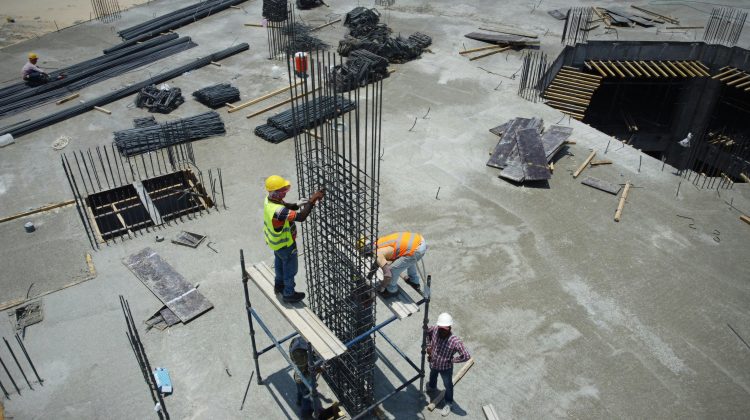Something that is often overlooked for most of us (depending on your industry), is workplace fire safety. We can’t prevent everything from happening, but there are things we can do to mitigate the risks with a few fire prevention tips.
In 2018, there were 103,600 non-residential fires (estimated). More than 30% of these were caused from cooking, 11.5% from carelessness, 7.8% from an electrical malfunction, and 9.8% that were intentional (wow! maybe we can cover this in another article).
Asses Fire Hazards
Look at the statistics above, we already know a few places to look for potential fire hazards. This will be a great starting point to building a fire prevention plan and keeping everyone safe.
Cooking: Looking at the stats above, the biggest cause was cooking. If your business has a kitchen, make sure the employees know it is a privilege to be able to use the kitchen at work, and they need to do so responsibly. Keep paper products away from the oven/ stove top. You could also have a kitchen monitor that checks on to make sure the oven is off after lunch.
Combustibles: Make sure that combustible materials are stored in the proper fire protection cabinets and away from heat sources.
Electrical Equipment: Remember, electrical malfunctions were 7.8% of fires. Make sure to do routine safety checks and have electricians inspect the office to make sure it is up to code.
This is a great way to start your emergency action plan, by knowing what the potential hazards are. Now we will go into ways that we can help mitigate these risks to limit the potential of a fire emergency.
Fire Protection Equipment
Now that we have some data and have identified potential fire hazards, we can look at what equipment could be installed at the office in high hazard areas to help prevent property damage if a fire does happen.
Fire Extinguishers: These should be a given, but if you don’t have them, get them! You can strategically place them in the kitchen, near flammable liquids, smoking areas, and flammable materials. There are also portable fire extinguishers so you can move around if needed.
Sprinkler Systems: If your building doesn’t already have these installed, this could probably be a pricey install. But if you rent the building, maybe the landlord would get them installed throughout the office. This could possibly get an insurance discount and depending on your industry, they could be an osha requirement.
Smoke Alarms: Are standalone devices that have a sensor that will make a loud noise when smoke is detected. They are powered by batteries and/or electrical, they can be connected to each other, so when one goes off, they all go off. Installing this around fire hazards and in offices, can help alert the staff of the danger. The NFPA has put together a great resource here.
Smoke Detectors: Similar to smoke alarms, smoke detectors put out a loud noise when there is smoke. What separates the two, smoke detectors can also have a strobe light, are hard wired in, so no worry about dead batteries, and they can also have fire alarm systems that signal the fire department when they go off.
Fire Suppression Systems: If you really want to go to the next level, this is it. A fire suppression system, somewhat like sprinklers, are set up to go off when smoke, fire, or carbon dioxide is detected. They will spray chemical reagents to extinguish the fire. These are great for commercial kitchens or data centers, since they are water-less and require minimal clean up.
Emergency Exits: Hopefully these are already present at all of your exits, but if not, get them added asap. Not only would it be a violation against the local fire code, but a disservice to employees.
Now that we have covered the fire safety equipment that should all (or most of) be used in your facility. Let’s move on to the emergency procedures that should be implemented.
Building An Emergency Action Plan
Do you remember when you were a kid and you would practice fire drills at school? Back then they always seemed fun, because we were able to get out of class for a while. Now we are grown up, doesn’t mean we still shouldn’t practice them. By practicing this monthly, it will help prepare employees in the event of a fire where to start at work.
Fire Drills: Practice these monthly or quarterly. Let employees get familiar with where the exits are and if there are multiple fire exit routes, they can learn them all in case one were to get blocked by a fire.
Evacuation Plan: Depending on the size of your building and if it is multiple stories, having maps by stairwells displaying all potential exits could save lives. Also, if there are multiple escape routes, make sure people know from “X wing” of the building, should use “X exit” since it is the closest.
Remember, no one ever regrets being prepared. Adding and implementing this into your company safety program can be the difference in life and death.
There Was A Fire At Work, Now What?
Hopefully there were plans in place to limit injuries and damage. If there wasn’t the company could be held liable for injuries to their employees. If you are an employee who was injured and received medical attention, you could potentially have a case to pursue the business for lost wages, even deaths caused by the fire. I would recommend speaking with a workplace death attorney that can help you with a case at this level of complexity.
Wrapping It Up
At the end of the day having and executing a good plan is key to keeping your employees safe. Most of these things should take too much time to implement and some could already be done. Make a note of the potential hazards, what can be done to mitigate them.
If you are leasing the building, try contact the landlord and see if they are on board with bringing the building up to code. Before contacting them, you can research the OSHA Standards and National Fire Protection Association for what is required for occupational safety.





No Comment